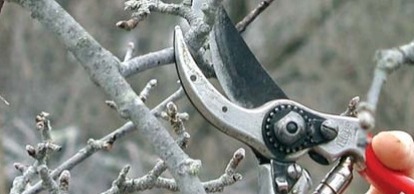It's time to prune those backyard fruit trees

By ERIC BARRETT
OSU Extension Educator
Early spring is a great time to prune the fruit trees in your back yard.
Backyard fruit is possible in the home garden, and it can be less work throughout the year if you prune the trees now.
The first thing to learn is that pruning encourages the tree to grow. We want the trees to grow to produce more fruit and to be strong enough to hold onto the fruit until it is ripe in the fall of the year.
Next, understand that by pruning, we will increase air circulation and sunlight penetration through the tree’s canopy. This decreases disease and insect pressure. Diseases like high humidity and darkness. Insects thrive in protected areas.
Pruning also increases the sugar content of fruit at the end of the season because of the increased sunlight penetration throughout the canopy of the tree. This sunlight can also lead to more uniform ripening of fruit.
Pruning a fruit tree starts with pruning out damaged or diseased branches.
Next, remove any branches crossing or rubbing other branches. Branches turning back toward the trunk of the tree or down toward the ground are not needed and should be pruned next. These branches will not get enough sunlight to produce fruit.
Competing leaders (the top of the tree) should be pruned to avoid structural problems with the tree later in its life.
If you have what I call Grandma’s Apple Tree, do not prune it all at once. Removing more than one-fourth of an established tree’s branches will result in many water sprouts throughout the tree. Simply remove two or three larger branches each year until you have a desirable size and shape to your tree.
Being good at pruning and utilizing pruning to get your trees to the correct shape can be the difference between a 2-inch fruit and a 3-inch-plus fruit.
 43
43
